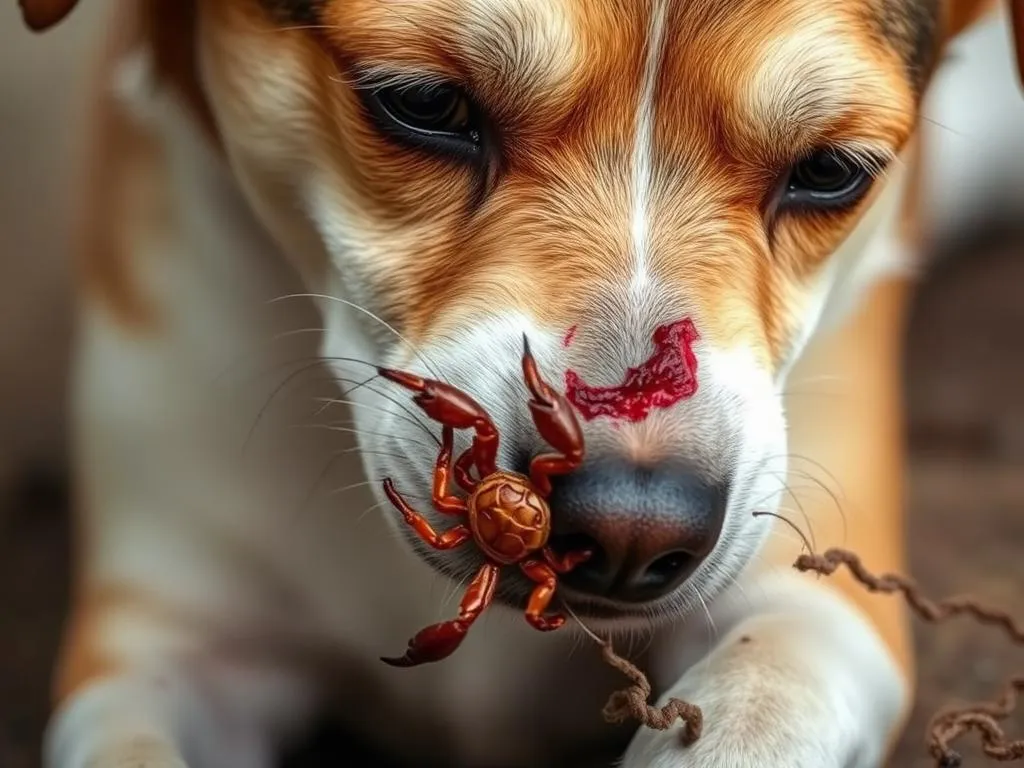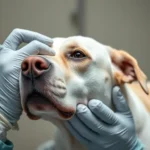
Introduction
Dog health care is a vital concern for pet owners, especially those living in regions where potential hazards like scorpions are prevalent. Understanding how to respond if your dog is stung by a scorpion can significantly impact their health and wellbeing. This article aims to provide a comprehensive guide on the necessary steps to take when faced with a dog stung by a scorpion. Timeliness and appropriate responses are crucial in enhancing your dog’s health and safety, ensuring they receive the care they need promptly.
Understanding Scorpion Stings
What Are Scorpions?
Scorpions are arachnids characterized by their eight legs, pincers, and a segmented tail that often ends in a venomous stinger. There are over 1,500 species of scorpions globally, but only about 30 are venomous enough to pose a serious threat to dogs. Common species that can endanger pets include the Arizona bark scorpion and the Mexican redknee scorpion, both of which are found in the southwestern United States.
The Venom of Scorpions
Scorpion venom is a complex mixture of proteins, enzymes, and toxins that can disrupt cellular functions. While the venom affects humans, causing pain and discomfort, it can have more severe consequences for dogs. Dogs may experience more intense reactions due to their smaller size compared to humans and their unique physiological responses. Understanding the potency of scorpion venom is key to recognizing the urgency of treatment following a sting.
Geographic Distribution
Scorpions are primarily found in warm, dry regions. Areas such as the southwestern United States, Mexico, and parts of the Middle East are known for their scorpion populations. Pet owners in these regions should be particularly vigilant. Identifying scorpion habitats—such as rocky areas, piles of wood, or debris—and taking preventive measures can help protect your furry friend from potential stings.
Signs and Symptoms of a Scorpion Sting in Dogs
Immediate Reactions
When a dog is stung by a scorpion, the initial symptoms are often immediate and can include:
- Pain: Your dog may whimper or cry out.
- Swelling: The area around the sting may swell, indicating an inflammatory response.
- Licking: Dogs may lick the affected area instinctively.
These immediate reactions should prompt you to monitor your dog closely for further symptoms.
Progressive Symptoms
As time passes, additional symptoms may develop. These can include:
- Lethargy: Your dog may seem unusually tired or weak.
- Vomiting: Nausea can occur, leading to vomiting.
- Difficulty Breathing: In severe cases, respiratory distress may arise.
- Tremors or Seizures: Severe reactions to the venom can cause muscle tremors or even seizures.
Recognizing these symptoms is crucial for determining the severity of the sting and whether veterinary assistance is needed.
When to Seek Veterinary Help
If you notice any of the following, seek veterinary help immediately:
- Severe swelling or pain
- Difficulty breathing
- Persistent vomiting
- Any signs of distress or lethargy
Timely intervention is critical, as scorpion venom can lead to serious complications if left untreated.
First Aid for a Dog Stung by a Scorpion
Assessing the Situation
The first step after a sting is to assess the situation calmly. Check your dog’s condition and any visible signs of distress. Staying calm will help you make rational decisions and provide comfort to your dog during this stressful time.
Basic First Aid Procedures
Once you have assessed the situation, you can take some basic first aid steps:
- Clean the Wound: Gently wash the area with soap and water to reduce the risk of infection.
- Cold Compress: Apply a cold compress or ice pack wrapped in a cloth to the sting site for 10-15 minutes to help reduce swelling and pain.
- Antihistamines and Pain Relievers: Consult with your veterinarian before administering any over-the-counter medications. Some antihistamines may be safe, but you must follow your vet’s guidance.
Emergency Measures
If your dog shows severe reactions, it’s essential to take the following emergency measures:
- Transport to the Vet: Keep your dog calm and transport them to a veterinary facility as quickly as possible.
- Monitor Vital Signs: Keep an eye on their breathing and heart rate during transit.
Being prepared for emergencies can make a significant difference in your dog’s recovery.
Veterinary Care: What to Expect
Diagnosis
When you arrive at the veterinary clinic, the veterinarian will begin by assessing your dog’s condition. They may ask about the timing of the sting, the symptoms you observed, and your dog’s medical history. Possible tests may include blood work or imaging to determine the extent of any complications from the sting.
Treatment Options
Veterinarians will typically administer several treatments based on the severity of the sting, which can include:
- Antivenom: In more severe cases, antivenom might be administered to counteract the effects of the venom.
- Fluids: Intravenous fluids may be given to help stabilize your dog and prevent dehydration.
- Pain Management: Pain relief medications will be provided to ensure your dog is comfortable during recovery.
Monitoring your dog during their stay at the veterinary clinic is critical. Vets will observe their response to treatment and make adjustments as necessary.
Prognosis
The prognosis after a dog stung by a scorpion varies depending on several factors:
- Size of the Dog: Smaller dogs may experience more severe symptoms than larger breeds.
- Type of Scorpion: Some scorpions have more potent venom than others.
- Timeliness of Treatment: Dogs that receive prompt medical attention typically have a better prognosis.
Most dogs recover fully with appropriate care, but recovery timelines can vary. Follow your veterinarian’s guidance for aftercare to ensure your dog heals properly.
Preventing Scorpion Stings
Safe Outdoor Practices
To keep your dog safe in scorpion-prone areas, consider the following practices:
- Supervised Outdoor Time: Always supervise your dog when they are outside, especially in the evening when scorpions are most active.
- Avoiding Rocky Areas: Steer clear of rocky or bushy areas where scorpions may hide.
Home Safety Measures
Making your home less inviting to scorpions can significantly reduce the risk of encounters:
- Seal Cracks: Inspect your home for cracks and gaps and seal them to prevent scorpions from entering.
- Remove Debris: Keep your yard clean by removing piles of wood, leaves, or other debris that may attract scorpions.
Training and Awareness
Educating yourself and your dog about scorpions is essential:
- Training Your Dog: Teach your dog commands like “leave it” to prevent them from approaching unknown objects or creatures.
- Awareness: Stay informed about local scorpion populations and potential hotspots in your area.
Being proactive in these areas can significantly reduce the risk of your dog being stung.
Conclusion
Understanding what to do if your dog is stung by a scorpion is crucial for every pet owner, especially in areas where these arachnids are common. Recognizing the signs of a sting and knowing how to respond can help ensure your dog’s health and safety. By being proactive in preventing scorpion encounters and preparing for emergencies, you can protect your furry friend effectively. Always keep your local veterinarian’s contact information handy for quick access during any pet-related emergencies.
With proper knowledge and preparation, you can help keep your dog safe and healthy, ensuring they enjoy a happy, active life.









